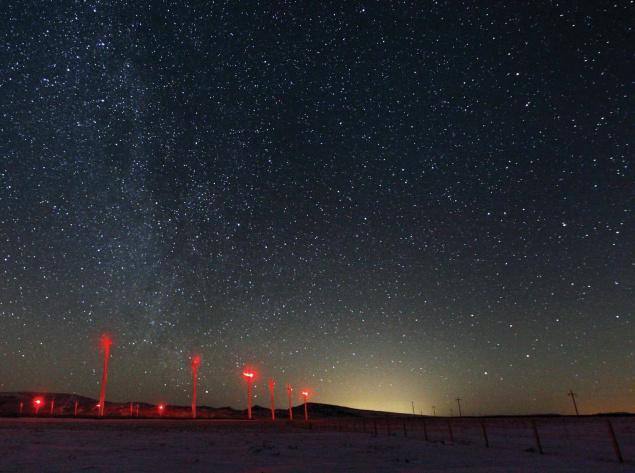June 25, 2014
A team of astronomers has identified possibly the coldest, faintest white dwarf star ever detected. This ancient stellar remnant is so cold that its carbon has crystallized, forming, in effect, an earth-sized diamond in space.

June 25, 2014
A team of astronomers has identified possibly the coldest, faintest white dwarf star ever detected. This ancient stellar remnant is so cold that its carbon has crystallized, forming, in effect, an earth-sized diamond in space.

The stars and the faint arm of the Milky Way are visible in this file photo clicked in Medicine Bow, Wyoming.
It is likely its age is the same as of the Milky Way, approximately 11 billion years old.
“It is a really remarkable object,” said David Kaplan, professor at University of Wisconsin-Milwaukee in the US.
“These things should be out there, but because they are so dim they are very hard to find,” he said.
Kaplan and his colleagues found this stellar gem using the National Radio Astronomy Observatory’s (NRAO) Green Bank Telescope (GBT) and Very Long Baseline Array (VLBA), as well as other observatories.
White dwarfs are extremely dense end-states of stars that have collapsed.
Composed mostly of carbon and oxygen, white dwarfs slowly cool and fade over billions of years.
“Our final image should show us a companion 100 times fainter than any other white dwarf orbiting a neutron star and about 10 times fainter than any known white dwarf, but we don’t see a thing,” said Bart Dunlap, a graduate student at the University of North Carolina at Chapel Hill and one of the team members.
“If there is a white dwarf there, and there almost certainly is, it must be extremely cold,” he added.
The researchers calculated that the white dwarf would be no more than a comparatively cool 3,000 degrees Kelvin (2,700 degrees Celsius).
Astronomers believe that such a cool, collapsed star would be largely crystallised carbon, not unlike a diamond.
The findings were published in the Astrophysical Journal.
Courtesy: IANS















































































































